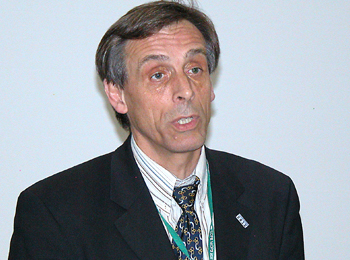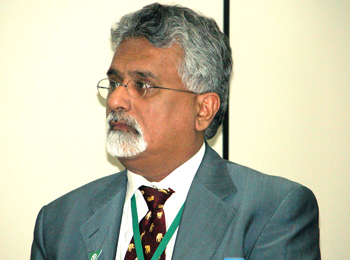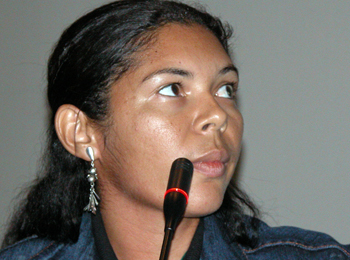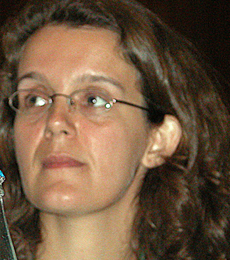 |
||
|
published by IISD, the International Institute for Sustainable Development
in cooperation with the CBD Secretariat |
|||
|
A Special Report on Selected Side Events at CBD COP-8
|
|||||
| 20-31 March 2006 | Curitiba, Brazil | |||||
 |
 |
||||
 |
|||||
|
United Kingdom Foreign & Commonwealth Office
|
|||||
Events convened on Monday, 27 March 2006
|
The contribution of Sustainable Development Reserves for the Conservation of Biodiversity in the Brazilian Amazon Presented by Conservation International (CI), the British Embassy in Brazil and the Government of the State of the Amazon |
|||
|
José Maria Silva, CI, emphasized the role of Brazilian states in protected areas (PAs), noting they have created 48% of PAs to date in the Brazilian Amazon. Describing the sustainable development reserves (SDRs) which have been created by the Government of the State of the Amazon, he stressed the importance of achieving a balance between conservation and sustainable use, of science and traditional knowledge working together, and of encouraging a sense of global community and ownership, explaining that in SDRs expropriation of private land within the reserve is not obligatory and depends on the recommendation of the management plan. Francisco Ademar da Silva Cruz, Government of the State of the Amazon, described the Cujubim reserve, saying that nearly 300 people from 56 families live in this very remote reserve. He described threats from illegal logging, hunting and predatory fishing. He said current activities include: making initial contact with reserve inhabitants and the municipality to develop a participatory management plan; scientific expeditions; capacity building for sustainable use of resources; and developing economic incentives for the provision of environmental services. Vírgilio Maurício Viana, Government of the State of the Amazon, described the Zona Franca Verde SDR programme which aims to reduce deforestation, promote conservation, improve livelihoods and create partnerships. He said that the Government of the State of the Amazon had focused on initiatives such as changing the economic incentives law to include forest products, and as a result had reduced deforestation by 67% over three years. Viana announced the creation of 2.4 million hectares of new reserves in the Brazilian Amazon, accomplishing the original target of 105 million hectares in a four year period. He said their success is based upon the participatory nature of PA creation and called for increased funding, through environmental services payments and partnerships with commercial enterprises. Referring to his recent visit to the Darwin Initiative project on sustainable management in Mamiaua, Brazil. Jim Knight, UK Minister for Rural Affairs, Landscape and Biodiversity, said he was particularly delighted to hear that the younger population in this community are moving back from the cities because of the increased standard of living. |
|||
|
|||
|
Partnerships in Building Capacity to Counter the Threat of Invasive Species Presented by the Global Invasive Species Programme (GISP) |
||||
|
In launching the UNEP/GEF and GISP Project, Ryan Hill, CBD Secretariat, highlighted the importance of this project in facilitating the implementation of CBD Article 8 (h) on alien species. Lynn Jackson, GISP, indicated that the project focuses on capacity building and legal arrangements rather than on scientific assessment of invasive alien species (IAS), with pilot phases in Chile, Costa Rica, Senegal, Tanzania and Vietnam. Jackson noted that IAS is one of the top three threats to biodiversity, with socio-economic and health impacts to the public and to the functioning of ecosystems. She also noted that developing countries are particularly vulnerable given their high dependency on primary production, lack of IAS managerial capacity and vulnerability to trade restrictions based on IAS concerns. She said the project is a result of needs identified throughout a series of GISP Regional Workshops between 2001 and 2004. Miguel Stutzing, Ministry of Agriculture, Chile, noted that IAS introduction into Chile occurs mainly through intentional human activities, for economic reasons such as hunting, fishing, agriculture, or for use as pets or ornaments. Rubén Muñoz Robles, Ministry of Environment and Energy, Costa Rica, described agricultural losses in the cocoa industry caused by an invasive fungal pathogen. Moustapha Mbay, Department of National Parks, Senegal, said the top priority for IAS control concerns water weeds and agricultural pests, highlighting the case of the River Delta. Le Thanh Binh, Vietnam Environmental Protection Agency, described the losses in rice fields due to the golden apple snail, noting that the Draft Biodiversity Action Plan to 2010 lists priority actions on invasive species. |
||||
|
|||
|
Dialogue for forest biodiversity in Brazil and Portugal Presented by the Society for Wildlife Research and Environmental Education (SPVS) |
||
|
Marílla Borgo, SPVS, provided an overview of the dire status of Paraná’s araucaria forests, with only 0.8% of original cover remaining, and many associated endemic species also at risk, and indicated opportunities for conservation. She noted the risks associated with plantation-style forestry, including vulnerability to invasive species.
Samual Infante, Quercus Fund for Nature Conservation (FCN), Portugal, noted synergies achieved working with SPVS, and described their Nature Protection Fund, mostly sourced from the private sector. He noted that, as in the rest of Europe, bats in this region are threatened, but that they have had success with securing a conservation plan with the local community. Sandro Coneglian, SPVS, discussed the araucaria adoption programme, which pairs private forest owners with companies willing to sponsor conservation, who then benefit from tax deductions. He explained that although the initial agreement is for 5 years, it can be renewed indefinitely, and stated that this has been effective in warding off conversion to of the land to agriculture and tree plantations. Deborah Cruz, Grupo Positivo, described her company’s experience in adopting the Uru araucaria forest, noting that this has served as a model for other landowners to follow, and as a living classroom for their environmental education programmes. Pedro Opuchkevich Júnior, Alba Campognolo and João Alberto Perrelli, owners of araucaria forest, recalled the challenges associated with resisting pressures to convert their land to more profitable uses, including from local authorities, and described how they have benefited from the SPVS adoption programme. |
||
|
|||
|
Heart of Borneo: Three Countries, One Conservation Vision Presented by the Governments of Indonesia, Malaysia an Brunei Darussala |
||||
|
Adi Susmianto, Directorate of Biodiversity Conservation, Indonesia, explained that Indonesia, Malaysia and Brunei Darussalam are cooperating jointly with assitance from WWF through a network of protected areas under the Heart of Borneo Initiative (HOB), adding that species in this area are threatened with extinction unless conservation efforts are undertaken. Arman Mallolongan, Ministry of Forestry, Indonesia, said the HOB is an expanse of transboundary highlands containing unique biodiversity essential for the prosperity of the entire island. He called on the donor community to provide technical support to enhance capacity building in the area of sustainable development. Dato’ Suboh Mohd Yassin, Ministry of Natural Resources and Environment, Malaysia, stated that the HOB initiative represents a significant milestone in transboundary cooperation. He recalled the CBD objectives of conservation of biological diversity and equitable sharing of benefits, adding that this initiative would also enhance existing transboundary strategies between Malaysia and Indonesia. He stressed that poverty eradication is linked to reversing biodiversity loss. Mahmud Yussof, Forestry Department, Brunei Darussalam, said the three countries have one conservation vision, explaining that the transboundary highlands are interconnected areas. He elaborated the steps that his country has taken towards facilitating the implementation of the HOB initiative, such as hosting the HOB workshop in 2005, and called on donors to provide financial support. Participants then watched a film presentation entitled “Save the Heart of Borneo.” In the ensuing discussions, representatives from the UK, the Netherlands, the EC and the CBD Secretariat commended the HOB initiative and expressed support for its implementation. Participants also raised issues concerning illegal logging and unsustainable conversion to oil palm plantations. |
||||
|
|||
|
Landscape Level Planning Presented by the UN Education, Scientific and Cultural Organization (UNESCO) |
||
|
Mohammed Rafiq, IUCN, said integrated landscape level planning (LLP) is important as a tool to enable pursuing joint development and conservation initiatives.
Urging participants to contribute to its current consultation phase, Martin Hollands, Cambridge Centre for Conservation Policy Limited (CCCP), explained that the LLP Initiative (LLPI) is UNESCO-led, in partnership with IUCN, the World Business Council for Sustainable Development, the International Council on Mining and Metals (ICMM), and the CCCP, and aims to promote the wider application of effective LLP in keeping with sustainable development principles. Natarajan Ishwaran, UNESCO, said the LLPI is located within UNESCO's Division of Ecological and Earth Sciences, saying the question now being posed is how to scale up and consider possibilities for the whole landscape. Andrew Parsons, ICMM, indicated his association's interest lies in an approach which takes geological information into account when planning decisions such as the creation of PAs. Noting the notion of “landscape level” had been part of Shell's discourse for some time, Steven de Bie, Shell International B.V., emphasized Shell takes this concept seriously, through actions such as environmental impact assessments, and in analyzing the direct and indirect impacts of drilling site choice. Emphasizing communication and joint planning, André Guimarães, Instituto Bioatlântica, described work with forest companies surrounding the restrictive PAs in a region dubbed the “Mesopotamia of Biodiversity”, with the highest diversity of tree species in the world, to effectively connect the PA fragments to protect wildlife and use private sector assets towards conservation. Discussion: Participants questioned the effectiveness of integrated LLP, but acknowledged the need to consider the overall landscape, emphasizing the need to set limits on human activity and called for removal of disparities caused by legislative frameworks. |
||
it is intended as a tool rather than an additional target for conservation
looking only in the rearview mirror
|
|||
|
Using Eco-gastronomy to Value Biodiversity in Rural areas Presented by Ministry of Agrarian Development, Brazil and the Slow Food Foundation for Biodiversity |
|||
|
Roberta Marins de Sá, Ministry of Agrarian Development, Brazil, introduced the Slow Food Movement, a global coalition whose objectives are to organize and fund projects that defend the world's heritage of agricultural biodiversity and gastronomic tradition while countering the homogenizing influence of of fast food. She presented three pillars of the Slow Food Movement that work to conserve biodiversity: the “intellectuals of food,” the native producers; the “ark of taste”, a global catalogue of native foods; and the “presidium,” the area where the foods are produced. Fussara Dantas de Souza, Cooperative of Family-Based Livestock and Agriculture of the Canudos, Vauá and Curaçá (COOPERCU), highlighted her community's efforts to preserve the umbu tree, explaining that many are over one hundred years old and capable of producing three hundred kilos of fruit a year, a vital source of income in Northeast Brazil. She emphasized that conservation methods such as the use of a wood-saving eco stove and the avoidance of slash and burn agriculture is undertaken with the collaboration with the Brazilian Institute of Environment and Natural Resources (IBAMA). Adolfo Timoto Vera Mina, Instituto Teko Arand, discussed the Juçara palm tree, explaining that in his region palm tree plantations had been established for the last ten years with the support of the Ministry of the environment. He elaborated on the multiple uses of palm tree products such as food, roofing, hammocks and chairs, explaining that native Juçara species is interplanted with two fast-growing exotics. Obadias Bastista Garcia, General Consul of Sateré Mawé tribe, highlighted the challenges facing guarana production stressing that its intellectual property belonged to the Sateré Mawé and is being inappropriately accessed. He explained that guarana produced from beans is now being commercialized into soft drinks, syrups and medicines using cloned plants. He lamented the dangers of commercialization using unsustainable farming methods. |
|||
identities and the Earth's resources
|
|||
|
||
|
Click the above button to go back to our ENB main coverage
|
||
|
|
|
|
|
||
|
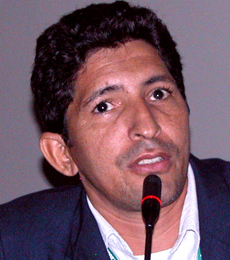
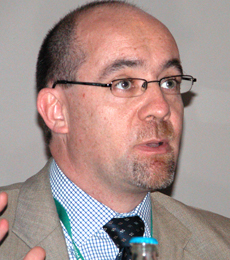
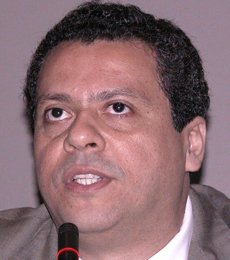
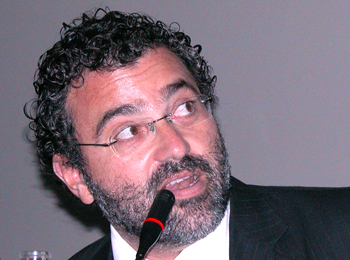






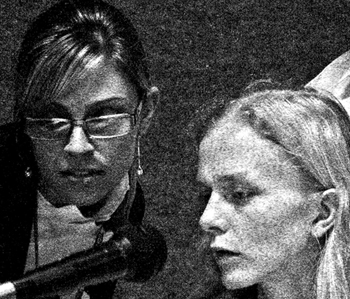
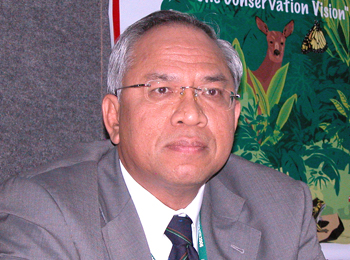
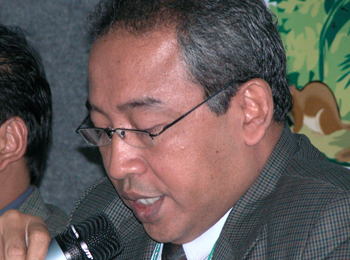
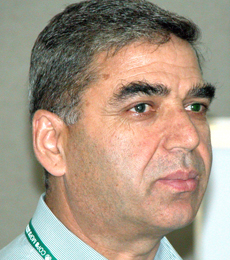
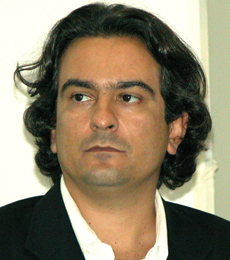
-tn0.jpg)
